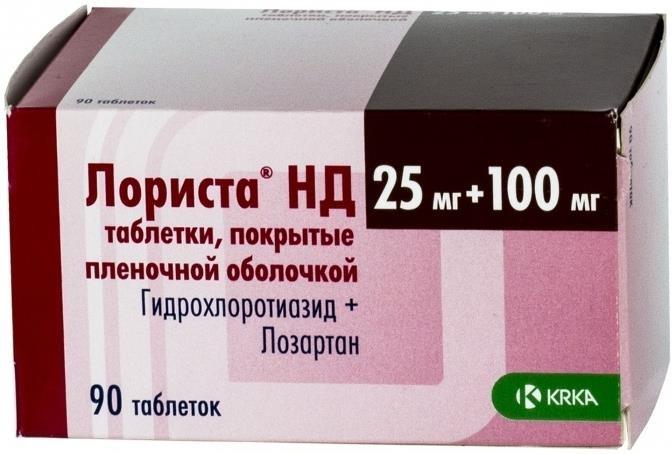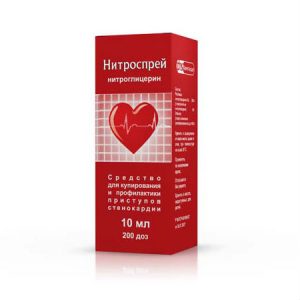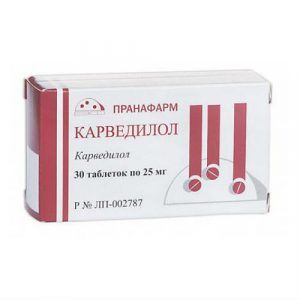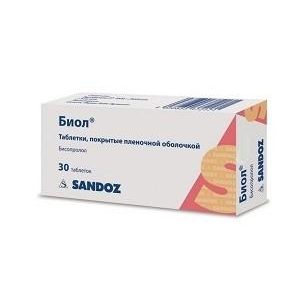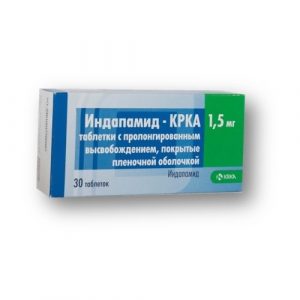Description
Latin name
Lorista HD
Release form
Tablets.
packaging 10 pcs – blisters (9) – packs of cardboard.
¤ °Ñ ¼ ° º ¾ » ¾ ³ ¸Ñ Ñ º ¾ ´ ¹ÑÑ ² ¸
¾ ¼ ± ¸ ½ ¸Ñ ¾ ² ° ½ ½ ¹ ° ½Ñ ¸ ³ ¸ ¿ Ñ Ñ ½ · ¸ ² ½ ¹ ¿Ñ ¿ °Ñ °Ñ .
¾ · °Ñ Ñ ° ½ – Ñ » ºÑ ¸ ² ½ ¹ ° ½Ñ ° ³ ¾ ½ ¸ÑÑ Ñ Ñ ¿Ñ ¾Ñ ¾ ² ° ½ ³ ¸ ¾Ñ ½ · ¸ ½ ° II Ñ ¸ ¿ ° ¢1 ½ ± » º ¾ ² ¾ ¹ ¿Ñ ¸Ñ ¾ ´ .
In vivo ¸ in vitro » ¾ · °Ñ Ñ ° ½ ¸ ³ ¾ ± ¸ ¾ » ¾ ³ ¸Ñ Ñ º ¸ ° ºÑ ¸ ² ½ ¹ º °Ñ ± ¾ ºÑ ¸ »Ñ ½ ¹ ¼ Ñ ° ± ¾ » ¸Ñ ( ¥ -3174) ± » ¾ º ¸Ñ ÑÑÑ ²Ñ Ñ ¸ · ¸ ¾ » ¾ ³ ¸Ñ Ñ º ¸ · ½ °Ñ ¸ ¼ ÑÑÑ ºÑ ° ½ ³ ¸ ¾Ñ ½ · ¸ ½ ° II ½ ° T1-Ñ Ñ ¿Ñ ¾Ñ ½ · ° ² ¸Ñ ¸ ¼ ¾ ¾Ñ ¿ÑÑ ¸ ³ ¾ Ñ ¸ ½Ñ · °: ¿Ñ ¸ ² ¾ ´ ¸Ñ º ¿ ¾ ² Ñ ½ ¸Ñ ° ºÑ ¸ ² ½ ¾ÑÑ ¸ Ñ ½ ¸ ½ ° ¿ » ° · ¼ ºÑ ¾ ² ¸, Ñ ½ ¸ ¶ ° Ñ º ¾ ½Ñ ½Ñ Ñ °Ñ ¸Ñ ° »Ñ ´ ¾ÑÑ Ñ ¾ ½ ° ² ¿ » ° · ¼ ºÑ ¾ ² ¸.
¾ · °Ñ Ñ ° ½ º ¾Ñ ² ½ ½ ¾ ² · ² ° Ñ ° ºÑ ¸ ² °Ñ ¸Ñ ¢2-Ñ Ñ ¿Ñ ¾Ñ ¾ ² · ° ÑÑ Ñ ¿ ¾ ² Ñ ½ ¸Ñ ÑÑ ¾ ² ½Ñ ° ½ ³ ¸ ¾Ñ ½ · ¸ ½ ° II. ¾ · °Ñ Ñ ° ½ ½ ¿ ¾ ´ ° ² »Ñ Ñ ° ºÑ ¸ ² ½ ¾ÑÑ Ñ º ¸ ½ ¸ ½ ° · II, Ñ Ñ ¼ ½Ñ °, º ¾Ñ ¾Ñ ¹ ÑÑ °ÑÑ ²Ñ Ñ ² ¼ Ñ ° ± ¾ » ¸ · ¼ ±Ñ ° ´ ¸ º ¸ ½ ¸ ½ °.
¡ ½ ¸ ¶ ° Ñ ¡ ¡, ´ ° ² » ½ ¸ ² ¼ ° » ¾ ¼ ºÑ Ñ ³ ºÑ ¾ ² ¾ ¾ ±Ñ °Ñ ½ ¸Ñ Ñ ¼ ½ÑÑ ° Ñ ¿ ¾ÑÑ ½ ° ³Ñ Ñ · ºÑ, ¾ º ° · ² ° Ñ ´ ¸ÑÑ Ñ ¸Ñ Ñ º ¸ ¹ ÑÑÑ ºÑ .
Ñ ¿ÑÑ ÑÑ ²Ñ Ñ Ñ ° · ² ¸Ñ ¸Ñ ³ ¸ ¿ Ñ Ñ Ñ ¾Ñ ¸ ¸ ¼ ¸ ¾ º °Ñ ´ °, ¿ ¾ ² Ñ ° Ñ Ñ ¾ » Ñ ° ½Ñ ½ ¾ÑÑ Ñ º Ñ ¸ · ¸Ñ Ñ º ¾ ¹ ½ ° ³Ñ Ñ · º Ñ ¿ °Ñ ¸ ½Ñ ¾ ² Ñ Ñ Ñ ¾ ½ ¸Ñ Ñ º ¾ ¹ Ñ Ñ ´ Ñ ½ ¾ ¹ ½ ´ ¾ÑÑ °Ñ ¾Ñ ½ ¾ÑÑ ÑÑ.
Ñ ¸ ¼ » ¾ · °Ñ Ñ ° ½ ° 1 Ñ ° ·/ÑÑÑ ¿Ñ ¸ ² ¾ ´ ¸Ñ º ÑÑ °Ñ ¸ÑÑ ¸Ñ Ñ º ¸ · ½ °Ñ ¸ ¼ ¾ ¼Ñ Ñ ½ ¸ ¶ ½ ¸Ñ Ñ ¸ÑÑ ¾ » ¸Ñ Ñ º ¾ ³ ¾ ¸ ´ ¸ °ÑÑ ¾ » ¸Ñ Ñ º ¾ ³ ¾ . Ñ Ñ ½ ¸ ÑÑÑ ¾ º » ¾ · °Ñ Ñ ° ½ Ñ ° ² ½ ¾ ¼ Ñ ½ ¾ º ¾ ½Ñ Ñ ¾ » ¸Ñ Ñ Ñ , ¿Ñ ¸ ÑÑ ¾ ¼ ° ½Ñ ¸ ³ ¸ ¿ Ñ Ñ ½ · ¸ ² ½ ¹ ÑÑÑ ºÑ Ñ ¾ ¾Ñ ² Ñ ÑÑ ²Ñ Ñ ÑÑ ÑÑ ² ½ ½ ¾ ¼Ñ Ñ ¸Ñ º ° ´ ½ ¾ ¼Ñ Ñ ¸Ñ ¼Ñ. ¡ ½ ¸ ¶ ½ ¸ ² º ¾ ½Ñ ´ ¹ÑÑ ² ¸Ñ ´ ¾ · ¿Ñ ¿ °Ñ °Ñ ° Ñ ¾ÑÑ ° ² »Ñ » ¾ ¿Ñ ¸ ¼ Ñ ½ ¾ 70-80% ¾Ñ ÑÑÑ ºÑ ° ½ ° ¿ ¸ º ´ ¹ÑÑ ² ¸Ñ ¿Ñ ¿ °Ñ °Ñ °, Ñ Ñ · 5-6 Ñ ¿ ¾Ñ » ¿Ñ ¸ ¼ °. ¡ ¸ ½ ´Ñ ¾ ¼ ¾Ñ ¼ ½ ½ ½ ° ± »Ñ ´ ° Ñ ÑÑ Ñ ° º ¶ » ¾ · °Ñ Ñ ° ½ ½ ¾ º ° · ² ° Ñ º » ¸ ½ ¸Ñ Ñ º ¸ · ½ °Ñ ¸ ¼ ¾ ³ ¾ ² » ¸Ñ ½ ¸Ñ ½ ° § ¡ ¡.
¾ · °Ñ Ñ ° ½ ÑÑÑ ºÑ ¸ ² ½ Ñ ¼Ñ ¶Ñ ¸ ½ ¸ ¶ ½Ñ ¸ ½, ° Ñ ° º ¶ Ñ ¿ ¾ ¶ ¸ » Ñ ( 65 » Ñ ) ¸ ± ¾ » ¼ ¾ » ¾ ´ Ñ ¿ °Ñ ¸ ½Ñ ¾ ² ( 65 » Ñ ).
¸ ´Ñ ¾Ñ » ¾Ñ ¾Ñ ¸ ° · ¸ ´ – Ñ ¸ ° · ¸ ´ ½ ¹ ´ ¸ÑÑ Ñ ¸ º, ´ ¸ÑÑ Ñ ¸Ñ Ñ º ¸ ¹ ÑÑÑ ºÑ º ¾Ñ ¾Ñ ¾ ³ ¾ Ñ ²Ñ · ° ½ Ñ ½ °Ñ ÑÑ ½ ¸ ¼ Ñ ° ±Ñ ¾Ñ ±Ñ ¸ ¸ ¸ ¾ ½ ¾ ² ½ °Ñ Ñ ¸Ñ, Ñ » ¾Ñ °, º ° » ¸Ñ, ¼ ° ³ ½ ¸Ñ, ² ¾ ´ ² ´ ¸ÑÑ ° »Ñ ½ ¾ ¼ ¾Ñ ´ » ½ ÑÑ ¾ ½ ° · ° ´ Ñ ¶ ¸ ² ° Ñ ² ² ´ ½ ¸ ¸ ¾ ½ ¾ ² º ° »ÑÑ ¸Ñ, ¼ ¾Ñ ² ¾ ¹ º ¸Ñ » ¾Ñ . ± » ° ´ ° Ñ ° ½Ñ ¸ ³ ¸ ¿ Ñ Ñ ½ · ¸ ² ½ ¼ ¸ Ñ ² ¾ ¹ÑÑ ² ° ¼ ¸ ³ ¸ ¿ ¾Ñ ½ · ¸ ² ½ ¾ ´ ¹ÑÑ ² ¸ Ñ ° · ² ¸ ² ° Ñ ÑÑ · ° ÑÑ Ñ Ñ °ÑÑ ¸Ñ ½ ¸Ñ °Ñ Ñ Ñ ¸ ¾ ». Ñ ° ºÑ ¸Ñ Ñ º ¸ ½ ¾ º ° · ² ° Ñ ² » ¸Ñ ½ ¸Ñ ½ ° ½ ¾Ñ ¼ ° »Ñ ½ ¾ . ¸ÑÑ Ñ ¸Ñ Ñ º ¸ ¹ ÑÑÑ ºÑ ½ °ÑÑ Ñ ¿ ° Ñ Ñ Ñ · 1-2 Ñ, ´ ¾ÑÑ ¸ ³ ° Ñ ¼ ° ºÑ ¸ ¼Ñ ¼ ° Ñ Ñ · 4 Ñ ¸ ¿Ñ ¾ ´ ¾ » ¶ ° Ñ ÑÑ 6-12 Ñ.
½Ñ ¸ ³ ¸ ¿ Ñ Ñ ½ · ¸ ² ½ ¾ ´ ¹ÑÑ ² ¸ ½ °ÑÑ Ñ ¿ ° Ñ Ñ Ñ · 3-4 ´ ½Ñ, ½ ¾ ´ »Ñ ´ ¾ÑÑ ¸ ¶ ½ ¸Ñ ¾ ¿Ñ ¸ ¼ ° »Ñ ½ ¾ ³ ¾ Ñ Ñ ° ¿ ²Ñ ¸Ñ Ñ º ¾ ³ ¾ ÑÑÑ ºÑ ° ¼ ¾ ¶ Ñ ¿ ¾Ñ Ñ ± ¾ ² °Ñ ÑÑÑ 3-4 ½ ´ » ¸.
Indications
Arterial hypertension (for patients who are shown combination therapy)
Reduced risk of cardiovascular morbidity and mortality in patients with hypertension and hypertension.
Contraindications
– anuria
– severe renal dysfunction (CC
– hyperkalemia
– dehydration (including against the background of taking high-dose diuretics)
– severe hepatic dysfunction
– refractory hypokalemia
– arterial hypotension
– lactase deficiency
– galactosemia or glucose malabsorption syndrome / galactose
– pregnancy
age 18 years – and safety not established)
– hypersensitivity to losartan and other components of the drug
– hypersensitivity to sulfonamide derivatives.
Caution should be used for violations of the water-electrolyte balance of the blood (hyponatremia, hypochloremic alkalosis, hypomagnesemia, hypokalemia), bilateral renal artery stenosis or stenosis of a single kidney artery, diabetes mellitus, hypercalcemia, hyperuricemia and / or gout, with a burdened allergic history (in some patients, angioedema developed earlier with the use of other drugs, including ACE inhibitors) and bronchial asthma, systemic blood diseases (including SLE), simultaneously with NSAIDs (including including COX-2 inhibitors).
Use during pregnancy and lactation
There are no data on the use of losartan during pregnancy. Renal perfusion of the fetus, which depends on the development of the renin-angiotensin system, begins to function in the third trimester of pregnancy. The risk to the fetus increases when taking losartan in the II and III trimesters, because taking drugs directly acting on the renin-angiotensin system during the second and third trimesters of pregnancy can lead to fetal death.
The use of diuretics during pregnancy is not recommended due to the risk of jaundice in the fetus and newborn, and thrombocytopenia in the mother. Diuretic therapy does not prevent the development of toxicosis of pregnancy.
When pregnancy is established, Lorista ND therapy should be discontinued immediately.
If you need to use the drug during lactation, you should stop breastfeeding.
Composition
Losartan potassium – 100 mg., hydrochlorothiazide – 25 mg.
Excipients: pregelatinized starch, microcrystalline cellulose, lactose monohydrate, magnesium stearate.
Dosage and administration
The drug is taken orally, regardless of food intake. Lorista ND can be combined with other antihypertensive agents.
In arterial hypertension, the initial and maintenance dose is 1 tab. (100/25 mg) 1 time / day. As a rule, the drug is prescribed in the absence of an adequate therapeutic effect Lorista N (50 / 12.5 mg). The maximum antihypertensive effect is achieved within 3 weeks of therapy. The maximum daily dose is 1 tab. Lorists ND.
With reduced BCC (for example, when taking diuretics in high doses), the recommended initial dose of losartan in patients with hypovolemia is 25 mg 1 time / day. In this regard, therapy with Lorista ND must be started after the diuretics are canceled and hypovolemia is corrected.
In elderly patients and patients with moderate renal insufficiency (CC 30-50 ml / min), including those on dialysis, no initial dose adjustment is required.
To reduce the risk of cardiovascular morbidity and mortality in patients with arterial hypertension and left ventricular hypertrophy, the standard initial dose of losartan is 50 mg 1 time / day. Patients who have not been able to achieve the target level of blood pressure while taking losartan 50 mg / day require treatment with a combination of losartan with low doses of hydrochlorothiazide (12.5 mg), and if necessary, increase the dose of losartan to 100 mg in combination with hydrochlorothiazide at a dose of 12.5 mg / day, in the future – increase the dose of hydrochlorothiazide, appointing Lorista ND 1 tablet / day.
Side effects
From the side of the central nervous system: often – headache, systemic and non-systemic dizziness, insomnia, fatigue, sometimes migraine.
From the cardiovascular system: often – orthostatic hypotension (dose-dependent), palpitations, tachycardia rarely – vasculitis.
From the respiratory system: often – cough, upper respiratory tract infections, pharyngitis, swelling of the nasal mucosa.
From the digestive system: often – diarrhea, dyspepsia, nausea, vomiting, abdominal pain is rare – hepatitis, impaired liver function is very rare – increased activity of liver enzymes and bilirubin.
From the musculoskeletal system: often – myalgia, back pain sometimes – arthralgia.
From the hematopoietic system: infrequently – anemia, Shenlain-Genoch purpura.
On the part of laboratory indicators: often – hyperkalemia, an increase in the concentration of hemoglobin and hematocrit (not clinically significant), sometimes – a moderate increase in the level of urea and creatinine in the blood serum.
Allergic reactions: sometimes – urticaria, itchy skin rarely – anaphylactic reactions, angioedema (including swelling of the larynx and tongue, causing obstruction of the airways and / or swelling of the face, lips, pharynx).
Other: often – asthenia, weakness, peripheral edema, chest pain.
Drug Interaction
Losartan
In clinical studies, no clinically relevant pharmacokinetic interaction of losartan with hydrochlorothiazide, digoxin, warfarin, cimetidine, phenobarbital, ketoconazolam was found.
Rifampicin and fluconazole reduce the active metabolite of losartan (this interaction has not been studied clinically).
Co-administration of losartan with potassium-sparing diuretics (spironolactone, triamterene, amiloride), potassium-containing additives or potassium salts can lead to hyperkalemia.
NSAIDs, incl. selective COX-2 inhibitors may reduce the effectiveness of diuretics and other antihypertensive agents, including losartan.
In patients with impaired renal function receiving NSAIDs (including COX-2 inhibitors), angiotensin II receptor antagonist therapy may lead to further impairment of renal function, including acute renal failure, which is usually reversible.
The hypotensive effect of losartan, like other antihypertensive agents, can be reduced when taking indomethacin.
Hydrochlorothiazide
When used together with thiazide diuretics, ethanol, barbiturates and narcotic drugs may potentiate the risk of orthostatic hypotension.
When administered with hypoglycemic agents (for oral and insulin intake), dose adjustment for hypoglycemic agents may be required.
When taken in combination with other antihypertensives, an additive effect is noted.
Cholestyramine and colestipol disrupt the absorption of hydrochlorothiazide.
When co-administered with ACS, ACTH shows a marked decrease in electrolyte levels, in particular, hypokalemia.
Hydrochlorothiazide reduces the severity of the response to pressor amines (eg, epinephrine, norepinephrine).
Hydrochlorothiazide enhances the effect of non-depolarizing type of muscle relaxants (eg, tubocurarin).
Diuretics reduce the renal clearance of lithium and increase the risk of lithium toxicity (co-administration is not recommended).
NSAIDs (including COX-2 inhibitors) may reduce the diuretic, natriuretic and antihypertensive effects of diuretics.
Due to the effect on calcium metabolism, the intake of thiazide diuretics may distort the results of the study of parathyroid function.
Overdose
Losartan
Symptoms: marked decrease in blood pressure, tachycardia, bradycardia due to parasympathetic (vaginal) stimulation.
Treatment: forced diuresis, symptomatic therapy, hemodialysis is ineffective.
Hydrochlorothiazide
Symptoms: The most common symptoms are due to electrolyte deficiency (hypokalemia, hypochloremia, hyponatremia) and dehydration due to excessive diuresis. With concomitant administration of cardiac glycosides, hypokalemia may aggravate the course of arrhythmias.
Treatment: carrying out symptomatic therapy
Storage conditions
The drug should be stored out of the reach of children at a temperature not exceeding 30 ° C.
Expiration
2 years.
Pharmacy
Pharmacy terms
Dosage form
dosage form
tablets
KRKA d.d. Novo mesto AO, Slovenia
